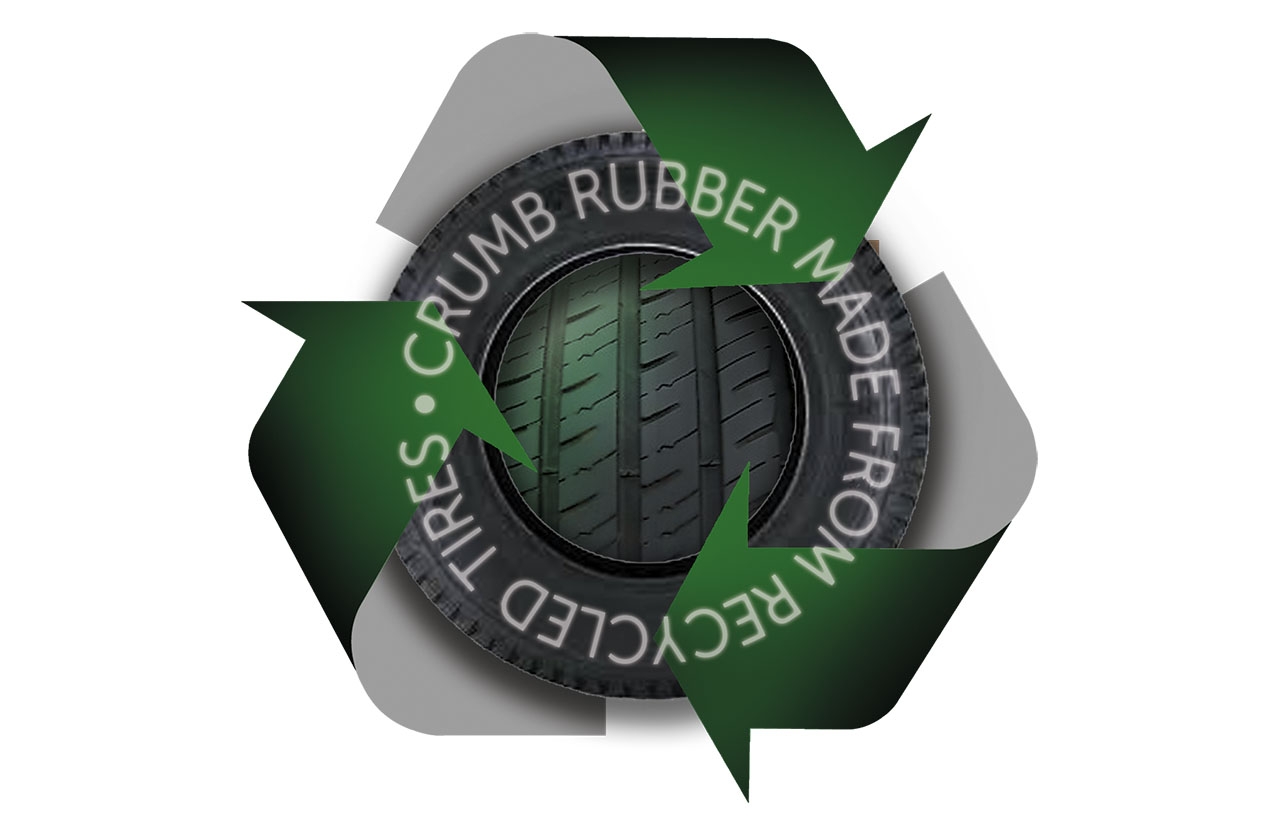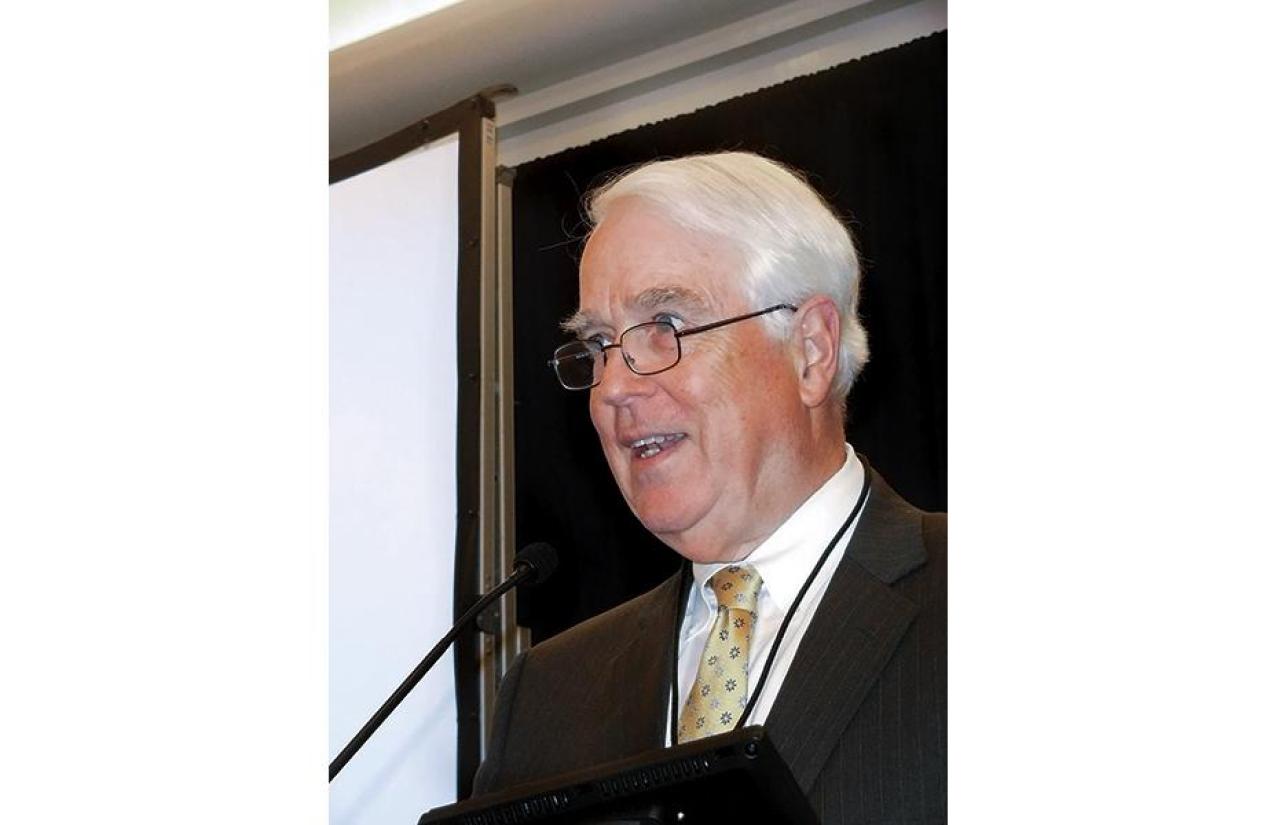Industry International Recycling Tire

HILTON HEAD, S.C.—Dry process crumb rubber modified asphalt (CRM) is the way forward if rubberized asphalt is to be a viable recycling technology in the future, according to a speaker at the 34th Clemson University Global Tire Conference.
“The window of opportunity is open, but it won’t remain open, because more aggressive industries will beat us to it,” Redmond Clark, president of Asphalt Plus L.L.C., said at the conference held April 18-20 at Hilton Head, S.C.
With more than 50 percent of all recycled rubber being used in non-sustainable markets, CRM using crumb rubber from recycled tires seems like a natural choice for all stakeholders, according to Clark.
Over the years, CRM has proved to last longer than regular asphalt. Clark said it provides a quieter pavement, better traction, lower maintenance and a great return on investment.
“Asphalt could consume all recycled tire rubber globally,” Clark said. Potential U.S. demand for recycled crumb rubber in the asphalt industry is about 6 billion pounds annually, which is the same amount U.S. waste tire operations could generate annually.
Nevertheless, only about 120 million pounds of recycled rubber is used for CRM every year—2 percent of the market potential.
Clark said there are multiple reasons for this. CRM has never really lived down the debacle of the Intermodal Surface Transportation Efficiency Act in the early 1990s.
ISTEA required state highway agencies to use an increasing percentage of CRM in highway projects as a prerequisite of receiving federal highway funds. However, states tried pilot projects without really understanding the technology, and the results were so disastrous that highway officials rebelled.
The rubberized asphalt provisions of ISTEA were repealed after a few years. “Rubber has been burned with a black mark ever since,” Clark said.
The “terminal blend” CRM technology from ISTEA days remains unpopular with customers, according to Clark.
“The mix sticks to their equipment, and they have trouble keeping the rubber particles suspended because they can’t melt,” he said.
Meanwhile, tire industry suppliers are selling styrene-butadiene-styrene polymers for use in hot-mix asphalt, and SBS has become much more popular than CRM, according to Clark. SBS is less expensive than terminal blend CRM, performs as well in asphalt and melts easily in the mix.

Photo by Miles MooreRedmond Clark, president of Asphalt Plus L.L.C.
“Terminal blend asphalt can’t compete,” he said.
To get recycled rubber into asphalt, the rubber recycling industry needs to listen to the customers, according to Clark.
“What the customer is saying is, ‘Give me pavement performance at least as good as SBS, make the material compatible with my plant, and charge less than SBS,’ ” he said.
Fortunately, dry process rubberized asphalt addresses those customer needs. Clark said it uses a chemically engineered crumb rubber that is added like an aggregate during asphalt mix production.
“Like a fine sand, the crumb rubber is blown into the process,” he said. “Plants see no difference in processing from regular asphalt.”
The dry process uses the heat from mix production to activate the rubber. The process improves the mix quality, eliminates the need for special handling, and is dramatically less expensive than either terminal blend or SBS.
Among other things, dry process mix is more workable at low temperatures than other technologies, according to Clark. “We can extend the season when we can lay asphalt,” he said.
Dry process CRM has been in the field 15 years, approaching 4 million tons placed to date, Clark said. The material now covers about 1,000 lane miles of interstate highway plus thousands of miles of state and county roads in a wide range of environments and mix designs.
The material has made 60 percent penetration into Georgia’s rubberized asphalt program, and 70 percent of pavement work on the Illinois Tollway will use dry process rubber, Clark said.
Eight states are in advanced stages of permitting dry process rubber, as are the European Union, China and some countries in the Middle East, according to Clark. Dry process manufacturers are getting increasing market support from the U.S. Tire Manufacturers Association and its members; Clark singled out the USTMA’s John Sheering for praise.
“The marketplace is telling us we hit the sweet spot,” he said.
Nevertheless, the tire recycling industry must make a united effort to make sure dry process, and not SBS, becomes the industry standard, according to Clark.
“We should be looking at ways for the tire industry to accelerate the adoption of this technology in the marketplace,” he said. “The specifications get changed because individual players band together and demand change.”




























